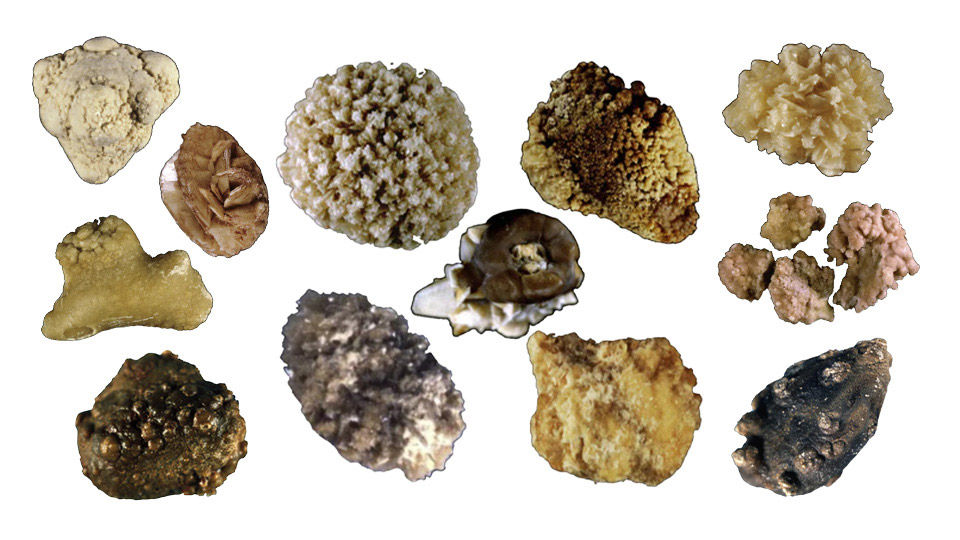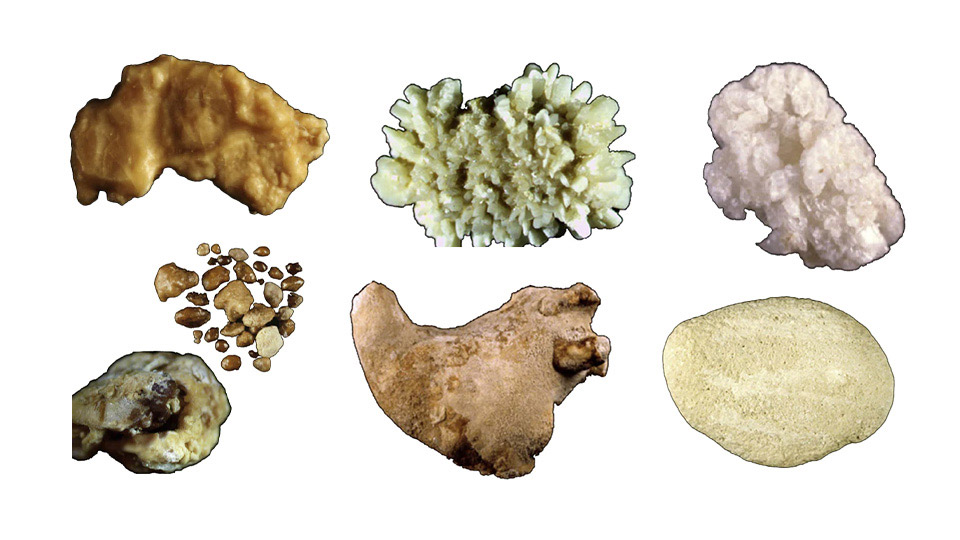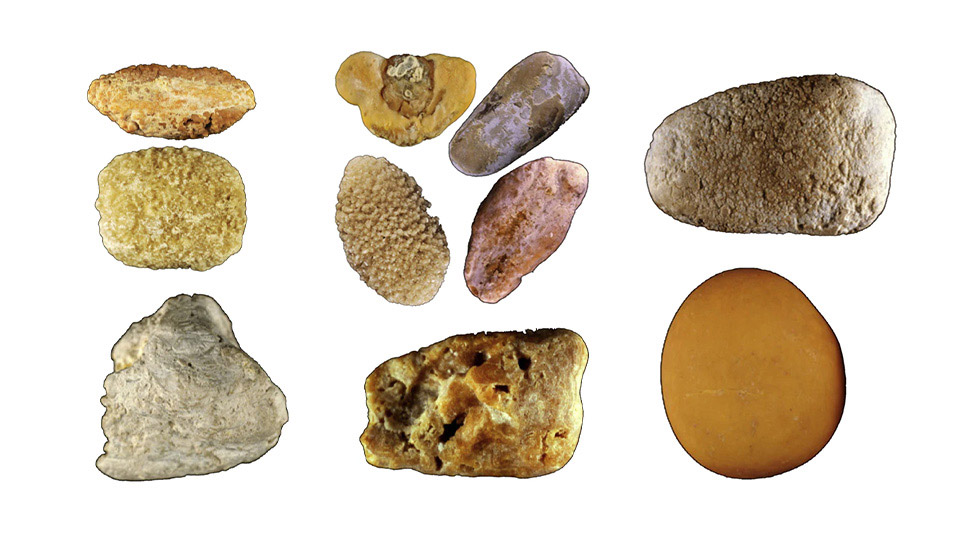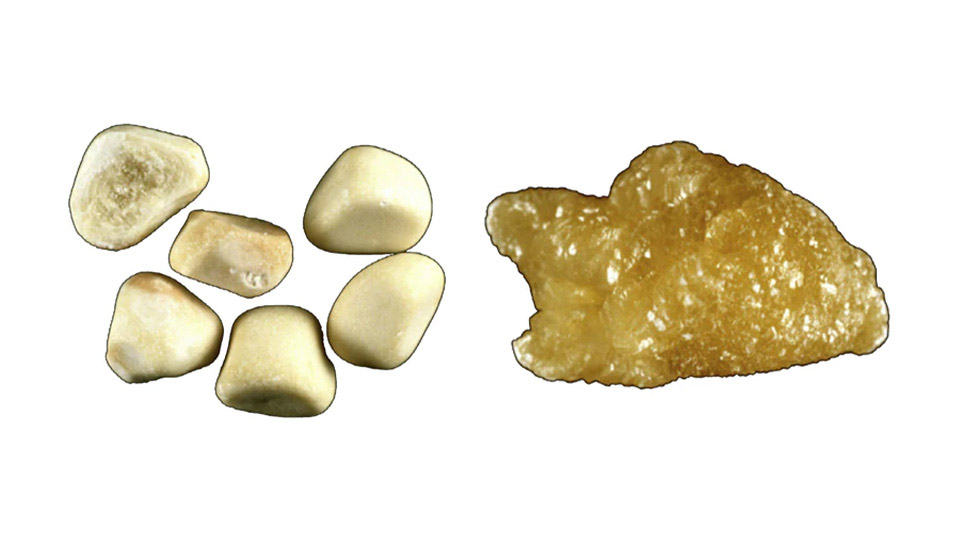Coming soon!
KIDNEY STONE IDENTIFICATION
A step-by-step process to help you identify your kidney stone type,
determine root causes, and assemble a plan to prevent future stones.
Table of Contents
Getting Started
Identifying your kidney stone type is essential for determining treatment options and when constructing a plan to prevent future stones.
To understand the root causes of your kidney stones you must use both visual identification and chemical analysis. There is no specific order to this. However, If this is your first kidney stone, you can also use density-based identification to start the process.
Download the Kidney Stone ID worksheet below to help guide you through this process:
Density-Based Identification
Suppose this is your first kidney stone, or you have never captured any of your previous kidney stones. Then, you can use a CT scan (Computed Tomography) to obtain your stone type because this imaging method provides density information that can be used for identification.
Please know that you MUST ASK your doctor to capture this information. Most doctors will not do this on their own.
If you have not had imaging yet or received an ultrasound or an x-ray, we encourage you to request a CT scan to obtain your stone's density.
While the density-based method is not exact, it provides a reference range that categorizes each kidney stone type. So, much like a fingerprint, every kidney stone type has a density range that can be used to identify your stone type.
If the density-based method is what you will be using for first-line identification, make sure to download or print the Kidney Stone ID Worksheet and follow these steps:
DENSITY-BASED IDENTIFICATION STEPS
Request a CT scan from your doctor to obtain stone density
Use the stone density guide below to find your stone type
Record the density of on the Kidney Stone ID worksheet
STONE DENSITY GUIDE
Use the following chart to help you take the density information from your CT scan represented in Hounsfield Units or HU to determine your stone type.
[image here]
Don't worry if you didn't get a CT scan or don't want to; you can still work to identify your kidney stone through visual and chemical analysis, which we will cover next.
VISUAL IDENTIFICATION
The next step in the process of stone identification assumes that you have either passed your stone or had it surgically removed. Please note that if you are having a stone surgically removed YOU MUST ASK to have your stone analyzed! Unfortunately, most doctors do not take this critical step.
Visual identification involves using the physical traits of your kidney stone, also known as morphology. Every kidney stone type has unique characteristics that set them apart, such as color, shape, and texture. From these features, the stone type, subtype, and tertiary type can be identified, which points to the root cause of your kidney stone.
As previously mentioned, visual identification is only half the equation when determining the stone type. Chemical analysis, which we will discuss next, identifies specific percentage concentrations of contributing materials like calcium, oxalate, phosphate, uric acid, and many more. Visual identification points more to the contributing factors that led to stone formation, such as diet, a chronic illness, or genetic factors.
If you already know what your stones look like or you've passed your stone (or had it removed), grab your Kidney Stone ID Worksheet and follow these steps to begin the visual identification process:
VISUAL IDENTIFICATION STEPS
Take multiple photos of your stone for comparison
Compare photos to images in the visual identification guide
Record your stone type & root cause on your worksheet
VISUAL IDENTIFICATION GUIDE
Use the following visual identification guide to help you find your specific kidney stone. If you see a stone that looks familiar, click the “SEE MORE” button underneath the image to view larger photos and to learn the root cause of your specific kidney stone type.
Next, we will finish the process with chemical analysis to identify the percentage concentration of specific stone-forming materials to help confirm your visual identification.
CHEMICAL ANALYSIS
The last step in the process involves taking the stone you just passed (or had removed) to your doctor for chemical analysis.
Most chemical analysis is performed using Fourier Transform Infrared Spectroscopy (FTIR). Chemical analysis using this method works by crushing the kidney stone into a fine powder, placing the powder on a crystal, and applying infrared beams. When the infrared beam hits the powdered kidney stone, they create a unique infrared spectrum similar to a fingerprint. This "fingerprint" is then compared to known fingerprints of kidney stone types.
There are two primary goals of chemical analysis:
- Identify potentially mixed stone types
- Confirm your visual identification
Identifying potentially mixed stone types is the most critical piece of chemical analysis. Visual analysis alone cannot see into the stone and thus cannot determine other stone-forming components that may be present. But, a chemical analysis can.
Stones with a mixed composition can point to multiple root causes. For example, if you form a stone that is 50% calcium oxalate monohydrate and 50% calcium phosphate. This composition suggests an issue with urine pH swinging from neutral/acidic to alkaline in addition to issues with your diet. This swing in urine pH may be due to a health condition, medication, or, more likely, diet choices.
The beauty of combining visual identification and chemical analysis is that it eliminates much of the guesswork for mixed composition stones. As mentioned in the above example, there could be multiple reasons this stone type was mixed. But, like a compass rose, the stone's color, shape, and texture (morphology) from visual identification will point to the underlying root cause.
When you finish your visual identification process on the Kidney Stone ID Worksheet, follow these steps to ensure you receive the correct information from your doctor when the chemical analysis is complete.
VISUAL IDENTIFICATION STEPS
Submit stone and written request for chemical analysis
Follow up with your doctor’s office after 2 weeks for the results
Record your stone type & root cause on your worksheet
It is crucial to follow these steps. Unfortunately, most doctors disregard kidney stone identification because they do not believe there are traceable root causes for each stone type. Instead, they think that people who form stones simply form stones, and that’s it.
You must take control of your medical experience. No one else will do it for you.
Once you receive your chemical analysis results, pull out your Kidney Stone ID Worksheet to complete the process of identifying your kidney stone type.
If your next steps towards prevention are unclear based on the root causes linked to your kidney stone type, book a coaching session to receive more advanced, one-on-one guidance to help you get your life back.
Book CoachingINCOMPLETE STONES
Sometimes your kidney stone may not pass in its complete form. Instead, stones may pass in small fragments, known as gravel or as fine particles, called sand. Or, you may not even see anything at all. As you can imagine, this makes visual and chemical identification difficult. So, if this has been your experience, there are a few things that you can do.
First, you will want to get yourself a urine strainer. These are like fine mesh strainers that you might find in your kitchen. We sell them here, and you can find them online and in most local medical supply stores.
When selecting a urine stainer, we recommend the style that fits under the rim of the toilet seat so you can stand or sit. Other types make you hold the strainer while urinating, which is inconvenient and messy.
Use the urine strainer every time you urinate when you're in the process of passing a kidney stone. Anyone passing a kidney stone can use strainers to make stone collection easier. But, it is essential for those that are passing gravel or sand.
Once you're finished urinating, inspect the strainer for any particles that look out of place. Some stone types will be dark, some light brown, and others can be almost white/clear. So, you may need to look very closely.
If you see something in your strainer, tap the sides against a hard surface onto a paper towel. Let the fragments or particles you've captured dry in a safe place free from a lot of moving air. The pieces of stone don't weigh much and are easily lost.
Once dry, you can place the collected fragment or sand into your chosen small container. We say container as bags are not convenient to work with, and stone particles tend to cling to the bags' soft plastic, making it difficult to get a complete sample for the lab.
Repeat this process until you have roughly a pea size amount of fragments or sand collected. This amount is enough material for an analysis to be completed.
Follow the steps outlined in the Chemical Analysis section to request your stone analysis.
If any of this doesn't make sense, don't worry. We're here to help! You can book a coaching session to help get all your questions answered.
Book CoachingWe use our own products, implement our own principles, and abide by the same advice we provide to our community.
We define success as the sharing of knowledge and educational benefit that it brings to our community.
We examine research thoroughly to ensure our beliefs, suggestions, and principles are supported by well-conducted research.



